Railway Recruitment Board is going to release the notification of Junior Engineers on 29 July 2024 for 7951 posts. This creates a golden opportunity for candidates with engineering background. As there is different set of syllabus of technical abilities for various engineering branch, which gets little bit confusing for candidates to decode the syllabus. So, in this article we are providing the syllabus for the Mechanical Engineering Branch for Computer Based Test Stage 1 & Stage 2 in detail.
RRB JE Mechanical Syllabus 2024
The RRB JE selection process includes two computer-based tests, i.e., CBT 1 and CBT 2, followed by Document Verification and Medical Examination. CBT 1 is common for all posts, but CBT 2 has a technical abilities section, which has a different set of syllabus for every engineering discipline.
Computer Based Test Stage 1 Syllabus
RRB JE CBT Stage 1 is of qualifying nature and it is common for all the post. The standard of questions asked in CBT 1 is up to 10th Standard .
Mathematics: Number systems, BODMAS, Decimals, Fractions, LCM and HCF, Ratio and Proportion, Percentages, Mensuration, Time and Work, Time and Distance, Simple and Compound Interest, Profit and Loss, Algebra, Geometry, Trigonometry, Elementary Statistics, Square Root, Age Calculations, Calendar & Clock, Pipes & Cistern.
General Intelligence and Reasoning: Analogies, Alphabetical and Number Series, Coding and Decoding, Mathematical operations, Relationships, Syllogism, Jumbling, Venn Diagram, Data Interpretation and Sufficiency, Conclusions and Decision Making, Similarities and Differences, Analytical reasoning, Classification, Directions, Statement Arguments and Assumptions etc.
General Awareness: Knowledge of Current affairs, Indian geography, culture and history of India including freedom struggle, Indian Polity and constitution, Indian Economy, Environmental issues concerning India and the World, Sports, General scientific and technological developments etc.
General Science: Physics, Chemistry and Life Sciences (up to 10th Standard CBSE syllabus).
Computer Based Test Stage 2 Syllabus
The Computer Based Test Stage 2 consist of five section in which 4 sections are common for all post but Technical abilities section has different syllabus for every Engineering discipline. Given below the detailed syllabus for RRB JE CBT Stage 2:
General Awareness : Knowledge of Current affairs, Indian geography, culture and history of India including freedom struggle, Indian Polity and constitution, Indian Economy, Environmental issues concerning India and the World, Sports, General scientific and technological developments etc.
Physics and Chemistry: Up to 10th standard CBSE syllabus.
Basics of Computers and Applications: Architecture of Computers; input and Output devices; Storage devices, Networking, Operating System like Windows, Unix, Linux; MS Office; Various data representation; Internet and Email; Websites & Web Browsers; Computer Virus.
Basics of Environment and Pollution Control: Basics of Environment; Adverse effect of environmental pollution and control strategies; Air, water and Noise pollution, their effect and control; Waste Management, Global warming; Acid rain; Ozone depletion.
Technical Abilities: The syllabus of this section varies according to the different Engineering discipline. This section carries 100 marks out of 150 marks in CBT 2.
Technical Abilities Syllabus for Mechanical & Allied Engineering
Check the detailed syllabus for the candidates from the mechanical stream. Understanding the following topics will help in strategizing your study and planning study for the following topics. For the ease of candidates, we have covered every topic under the mechanical syllabus. Start your preparation now to grab the desired success.
Engineering Mechanics: Resolution of forces, Equilibrium and Equilibrant, parallelogram law of forces, triangle law of forces, polygon law of forces and Lami’s theorem, couple and moment of a couple, condition for equilibrium of rigid body subjected to number of coplanar non-concurrent forces, definition of static friction, dynamic friction, derivation of limiting angle of friction and angle of repose, resolution of forces considering friction when a body moves on horizontal plane and inclined plane, calculation of moment of inertia and radius of gyration of : (a) I-Section (b) channel section (c) T-Section (d) L-Section (Equal & unequal lengths) (e) Z-Section (f) Built up sections (simple cases only), Newton’s laws of motion (without derivation), motion of projectile, D’Alembert’s principle, definition law of conservation of energy, law of conservation of momentum.
Material Science: Mechanical properties of engineering materials – tensile strength, compressive strength, ductility, malleability, hardness, toughness, brittleness, impact strength, fatigue, creep resistance. Classification of steels, mild, steel, and alloy steels. Importance of heat treatment. Heat treatment processes – annealing, normalizing, hardening, tempering, carburizing, nitriding, and cyaniding.
Strength of Materials: Stress, stress-strain diagram, a factor of safety, thermal stresses, strain energy, proof resilience and modulus of resilience. Shear force and bending moment diagram – cant leaver beam, simply supported beam, continuous beam, fixed beam. Torsion in shafts and springs, thin cylinder shells.
Machining: Working principle of lathe. Types of lathes – Engine lathe – construction details and specifications. Nomenclature of single point cutting tool, geometry, tool signature, functions of tool angles. General and special operations – (Turning, facing, taper turning thread cutting, knurling, forming, drilling, boring, reaming, keyway cutting), cutting fluids, coolants, and lubricants. Introduction to shaper, slotter, plainer, broaching, milling and manufacture of gears, heat treatment process applied to gears.
Welding: Welding – Introduction, classification of welding processes, advantages and limitations of welding, principles of arc welding, arc welding equipment, choice of electrodes for different metals, the principle of gas (oxy-acetylene) welding, equipment of gas welding, welding procedures (arc & gas), soldering and brazing techniques, types and applications of solders and fluxes, various flame cutting processes, advantages and limitations of flame cutting, defects in welding, testing, and inspection modern welding methods, (submerged, CO2, atomic – hydrogen, ultrasonic welding), brief description of MIG & TIG welding.
Grinding & Finishing Process: Principles of metal removal by grinding, abrasives, natural and artificial, bonds and binding processes, vitrified, silicate, shellac rubber, grinding machines, classification: cylindrical, surface, tool & cutter grinding machine, construction details, relative merits, principles of centerless grinding, advantages & limitations of centerless grinding work, holding devices, wheel maintenance, balancing of wheels, coolants used, finishing by grinding, honing, lapping, super finishing, electroplating, basic principles – plating metals, applications, hot dipping, galvanizing tin coating, parkerising, anodizing, metal spraying, wire process, powder process and applications, organic coatings, oil base paint, lacquer base enamels, bituminous paints, rubber base coating.
Metrology: Linear measurement – Slip gauges and dial indicators, angle measurements, bevel protractor, sine bar, angle slip gauges, comparators (a) mechanical (b) electrical (c) optical (d) pneumatic. Measurement of surface roughness; methods of measurements by comparison, tracer instruments and by interferometry, collimators, measuring microscope, interferometer, inspection of machine parts using the concepts of shadow projection and profile projection.
Fluid Mechanics & Hydraulic Machinery: Properties of fluid, density, specific weight, specific gravity, viscosity, surface tension, compressibility capillarity, Pascal’s law, measurement of pressures, concept of buoyancy. Concept of Reynold’s number, pressure, potential and kinetic energy of liquids, total energy, laws of conservation, mass, energy and moment the um, the velocity of liquids and discharge, Bernoulli’s equation and assumption, Venturimeters, pitot tube, current meters. Working principle & constructional details of centrifugal pump, efficiencies – manometric efficiency, volumetric efficiency, mechanical efficiency and overall efficiency, cavity, action, and its effect, working principle of jet & submersible pumps with line diagrams.
Industrial Management: Job analysis, motivation, different theories, satisfaction, performance reward systems, production, planning and control, relation with other departments, routing, scheduling, dispatching, PERT and CPM, simple problems. Materials in industry, inventory control model, ABC Analysis, Safety stock, re-order, level, economic ordering quantity, break even analysis, stores layout, stores equipment, stores records, purchasing procedures, purchase records, Bin card, Cardex, Material handling, Manual lifting, hoist, cranes, conveyors, trucks, fork trucks.
Thermal Engineering: Laws of thermodynamics, conversion of heat into work and vice versa, laws of perfect gases, thermodynamic processes – isochoric, isobaric, isothermal hyperbolic, isentropic, polytrophic and throttling, modes of heat transfer, thermal conductivity, convective heat transfer coefficient, Stefan Boltzmann law by radiation and overall heat transfer coefficient. Air standards cycles – Carnot cycle, Otto cycle, Diesel cycle, construction and working of internal combustion engines, comparison of diesel engine and petrol engine. Systems of internal combustion engine, performance of internal combustion engines. Air compressors their cycles refrigeration cycles, the principle of a refrigeration plant.
| Check RRB JE Related Link | |
| RRB JE Cut Off 2024 | RRB JE Notification 2024 |
| RRB JE Previous Year Question Paper | RRB JE Salary 2024 |
| RRB JE Syllabus and Exam Pattern 2024 | |

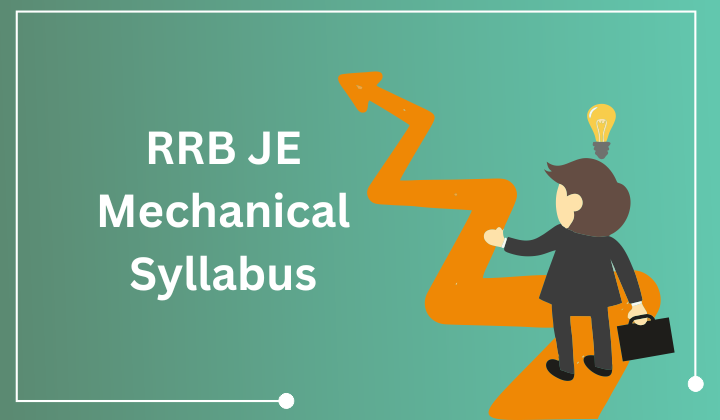
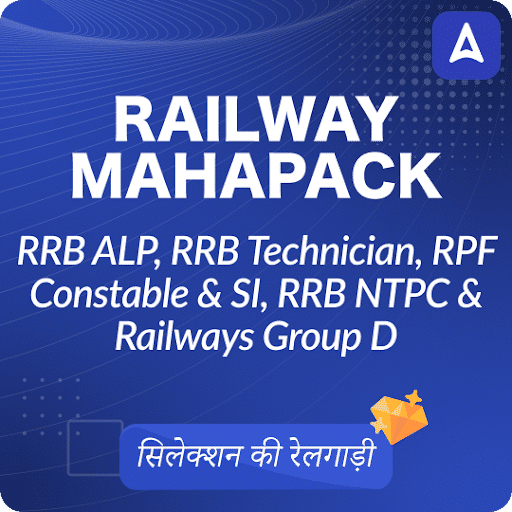

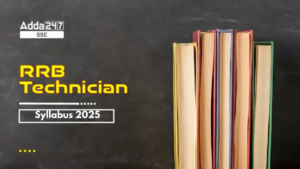 RRB Technician Syllabus 2025 and Exam Pa...
RRB Technician Syllabus 2025 and Exam Pa...
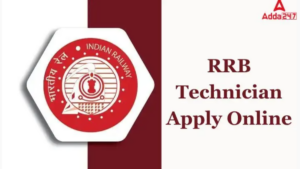 RRB Technician Apply Online 2025 started...
RRB Technician Apply Online 2025 started...
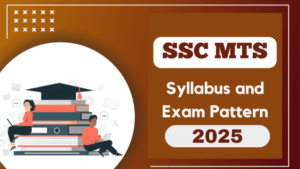 SSC MTS 2025 Syllabus and Exam Pattern, ...
SSC MTS 2025 Syllabus and Exam Pattern, ...


